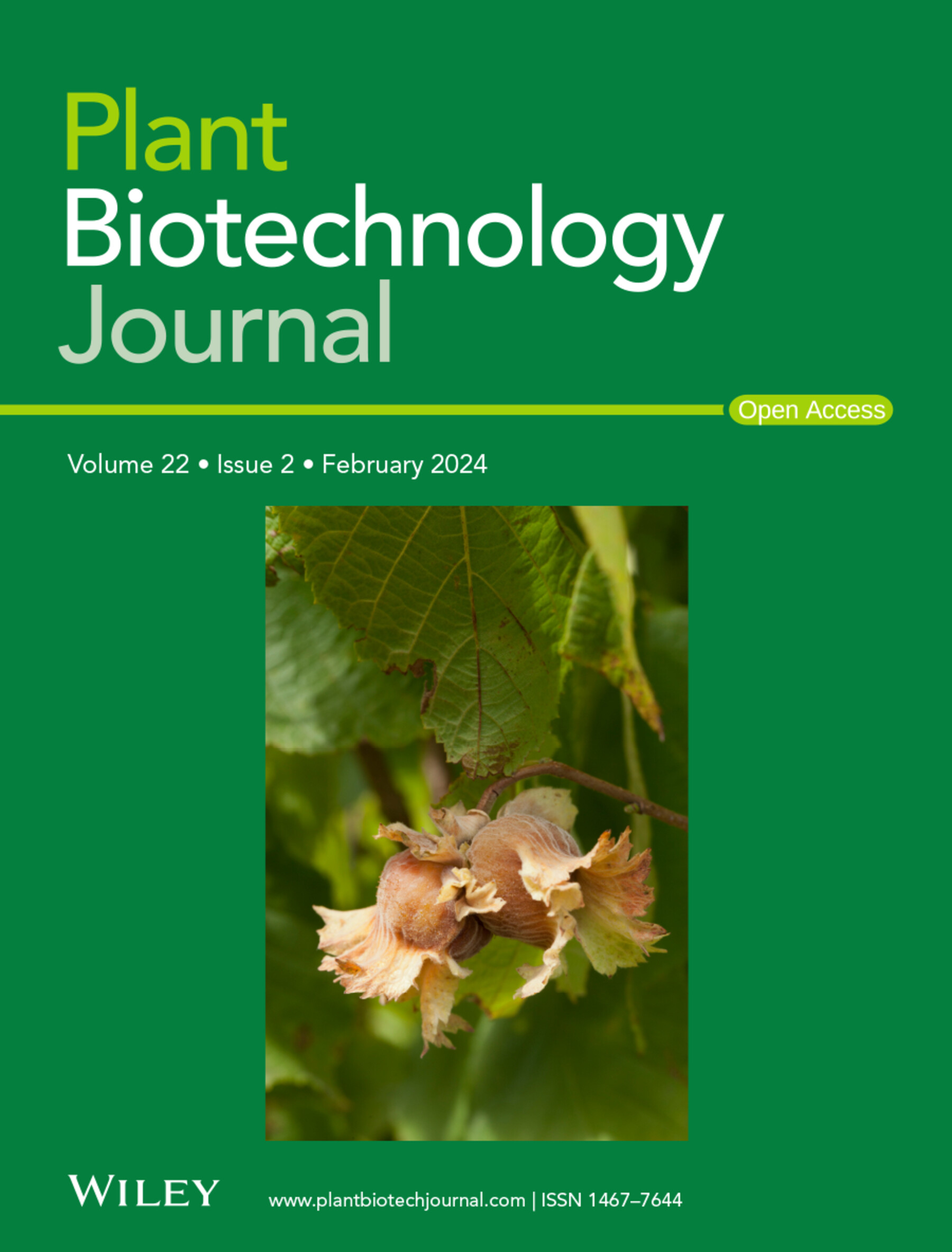一个半显性NLR等位基因调控小麦的生长和抗病能力。
IF 10.5
1区 生物学
Q1 BIOTECHNOLOGY & APPLIED MICROBIOLOGY
引用次数: 0
摘要
小麦白粉病是小麦生产的一个重大威胁,因此有必要开发抗病品种,作为经济上可行和环境上可持续的战略。在这项研究中,我们研究了一种半显性突变体,坏死叶(necl),它表现出自发坏死病变和增强对白粉病的抵抗力。我们通过基于图谱的克隆、转化和诱变相结合,确定了necl表型是由卷曲卷曲的核苷酸结合的富含亮氨酸的重复序列(CC-NLR)蛋白TaCNL中421位的Lys-to-Glu功能获得突变引起的。进一步分析表明,TaCNL突变体增强对白粉病的抗性可能是通过激活苯丙氨酸分解代谢过程和增加水杨酸水平来实现的。重要的是,人工修饰TaCNL的421位氨基酸为酸性残基可诱导免疫坏死,这提示了一种工程抗病蛋白的潜在策略。这些发现对TaCNL调控小麦生长和防御的双重作用提供了新的见解,并为开发小麦持久抗性提供了宝贵的遗传资源。本文章由计算机程序翻译,如有差异,请以英文原文为准。
A semi-dominant NLR allele regulates growth and disease resistance in wheat.
Wheat powdery mildew is a significant threat to wheat production, necessitating the development of disease-resistant varieties as an economically viable and environmentally sustainable strategy. In this study, we investigated a semi-dominant mutant, necrosis leaf (necl), which exhibits spontaneous necrotic lesions and enhanced resistance to powdery mildew. We identified that the necl phenotype is caused by a Lys-to-Glu gain-of-function mutation at position 421 in the coiled-coil nucleotide-binding leucine-rich repeat (CC-NLR) protein TaCNL, through the combination of map-based cloning, transformation, and mutagenesis. Further analysis indicated that the TaCNL mutant enhanced resistance to powdery mildew likely through activation of the phenylalanine catabolic process and increased salicylic acid levels. Importantly, artificially modifying the amino acid at position 421 of TaCNL to an acidic residue induces immune necrosis, suggesting a potential strategy for engineering disease-resistant proteins. These findings provide novel insights into the dual role of TaCNL in modulating growth and defence in wheat and offer a valuable genetic resource for developing durable resistance in wheat.
求助全文
通过发布文献求助,成功后即可免费获取论文全文。
去求助
来源期刊

Plant Biotechnology Journal
生物-生物工程与应用微生物
CiteScore
20.50
自引率
2.90%
发文量
201
审稿时长
1 months
期刊介绍:
Plant Biotechnology Journal aspires to publish original research and insightful reviews of high impact, authored by prominent researchers in applied plant science. The journal places a special emphasis on molecular plant sciences and their practical applications through plant biotechnology. Our goal is to establish a platform for showcasing significant advances in the field, encompassing curiosity-driven studies with potential applications, strategic research in plant biotechnology, scientific analysis of crucial issues for the beneficial utilization of plant sciences, and assessments of the performance of plant biotechnology products in practical applications.
 求助内容:
求助内容: 应助结果提醒方式:
应助结果提醒方式:


